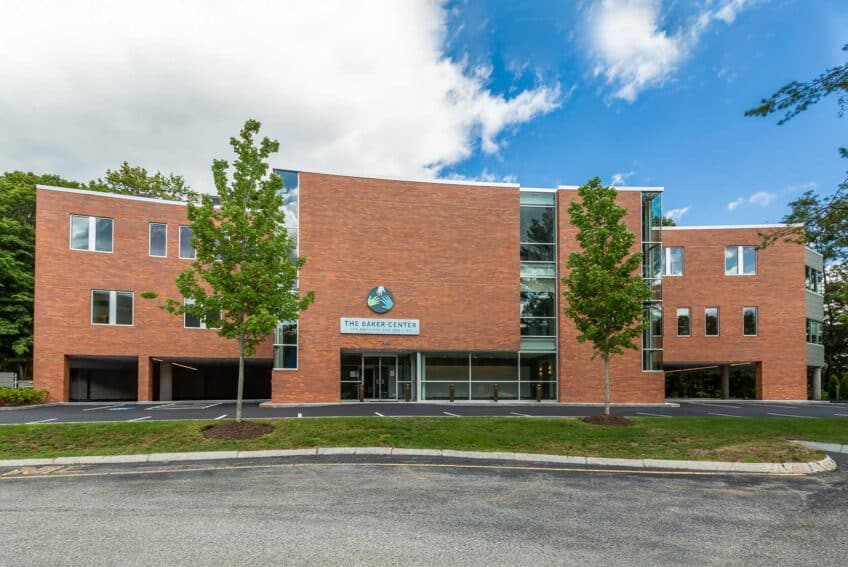Comfort Kitchen restaurant opens in Dorchester
Restaurateurs bring international approach to comfort cuisine

After a three-year delay, Comfort Kitchen restaurant and café opened to the public in a renovated historic building in Upham’s Corner on Jan. 25.
Comfort Kitchen, which serves sandwiches and café fare during the day and a full dinner menu in the evening, is operating with a focus on community and immigrant involvement.
Kwasi Kwaa, chef partner at the restaurant, described the food as “global comfort food” focused on the intersection of travel and trade.

Kwasi Kwaa and Biplaw Rai are co-owners of Comfort Kitchen in Upham’s
Corner. PHOTO: AVERY BLEICHFELD
“Every season we’re going to be visiting a new region of the world,” Kwaa said. “We pick ingredients and we pick cooking methods that have traveled throughout the globe, based on those trade sequences, and that’s what we’re trying to follow.”
Biplaw Rai, managing partner at Comfort Kitchen, said the menu aims to explore how people and spices have traveled across the world by celebrating food from the African diaspora while connecting it to the spice trade from South Asia.
“There’s a lot of intersections with it, especially in spices we use, the method of cooking and all,” Rai said. “So that’s what we’re doing, we’re celebrating and we’re exploring that.”
Themes around immigration have also served as key factors in the setup of the restaurant. Both Rai and Kwaa come from immigrant backgrounds — Rai from Nepal, Kwaa from Ghana — which has shaped their process for their work, especially in the context of the food industry. According to the American Community Survey, about one-fifth of workers in the food service industry are foreign-born.
“The restaurant industry is heavily dominated by immigrants, like, immigrants run it. You walk in any kitchen — it could be Japanese, Mexican, American cuisine — a lot of people behind the kitchen are immigrants,” Rai said. “But our experience has been that immigration hasn’t been celebrated like it should be.”
For Kwaa, Comfort Kitchen serves as an opportunity to bring what he considers more needed humanity into the food industry, and a big part of that is respecting the impact of immigrants in the industry.
“We understand that the food industry is very reliant on immigrant labor. Being immigrants — both of us — we’re really trying to showcase not just immigrant food, but also the amount of effort from immigrants that goes into the food industry,” Kwaa said.
A long road
The development of Comfort Kitchen has been a slow process. Originally slated to begin operations in mid-2020, the space did not open to the public for nearly three years due to delays from the COVID-19 pandemic. During that time, the restaurant operated with a pop-up model, temporarily using other spaces across the metro Boston area to serve customers and build a base, testing out menu items that celebrated different cuisines, Rai said.
The pop-ups allowed them to figure out what worked for their menu, Kwaa said.
“With the pop-ups, we were able to get a chance to kind of fine-tune our systems, if you would,” Kwaa said. “Right now, we’re in a situation where we’re able to open with a team that’s very solid, because we’ve been doing dry runs for the past three years.”
The pop-ups also shaped the opening menu. While the restaurant plans to change food options seasonally, its current menu is something of a selection of “greatest hits,” Rai said, drawing from the items that were most popular before they opened their brick-and-mortar location.
The building’s physical location in Upham’s Corner repurposes what originally served as a “comfort station,” or public restroom, for passengers on Boston’s street car system in the early 20th century. The restaurant’s name draws on that legacy. The building had been vacant since 1977.
Kathy Kottaridis, executive director of Historic Boston Incorporated (HBI), said the building’s transformation from restroom to restaurant is a good example of adaptive reuse.
“The building’s been adapted to a restaurant. The exterior, though, pretty much says, ‘I was built in the early 20th century, and these are the characteristics of that,’ so I think it really is a nice balance,” Kottaridis said.
The exterior of the building retains most of the historical details, with the stucco and terracotta-tile roof preserving the historic features, while the interior, aside from some floor tiling, has very little that is original.
Rai said he finds being and working in a preserved historic building very special.
“Even though the path to our opening was tumultuous in terms of construction and pandemic and the prices rising because of the pandemic, the final product is beautiful,” he said.
Goal: Local ownership
Kottaridis said HBI, which currently serves as landlord for the property, eventually hopes to sell the building to Comfort Kitchen.
“When we do these projects, we don’t want to own them forever; we want to get them into the hands of the people that we worked on them with,” Kottaridis said. “So even with Comfort Kitchen, our goal is to get it to them in five years, when finance compliance matters are out of the way, so that it will be locally owned and taken care of by the folks who helped us develop it.”






